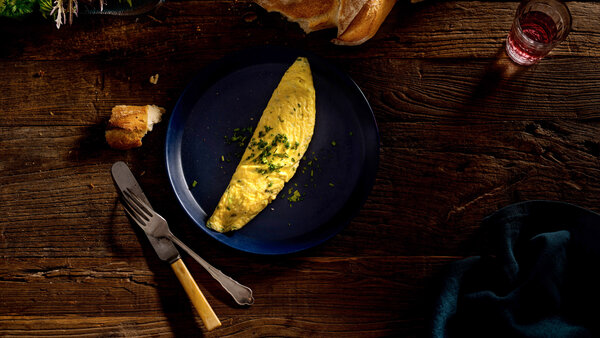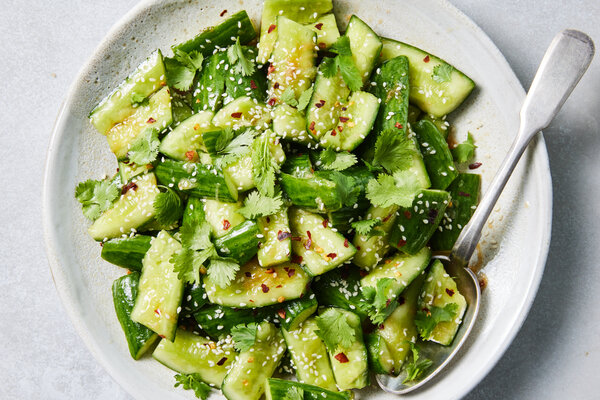From history to technique, become an expert on this eggy classic.
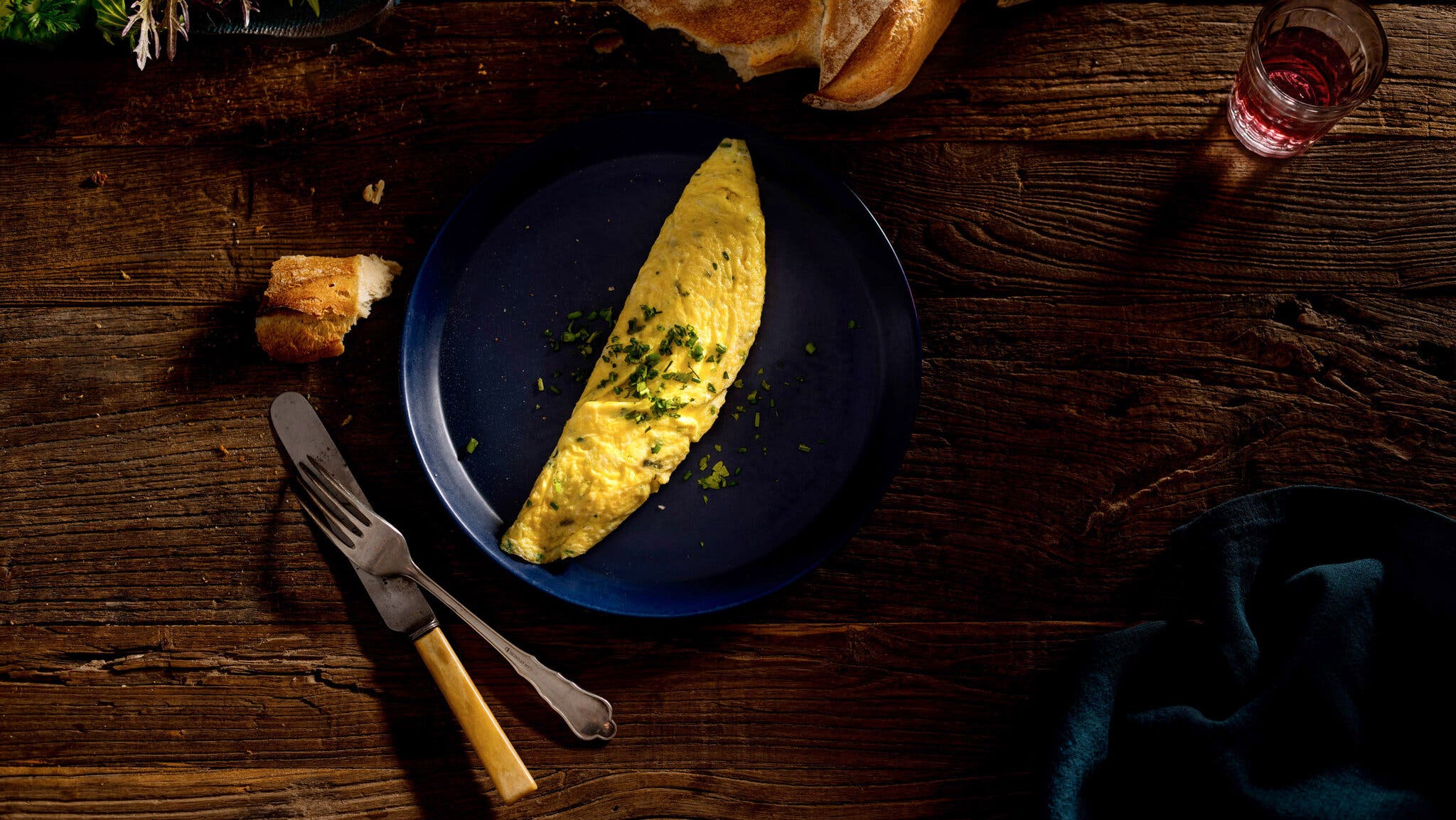
An omelet Francesco Tonelli for The New York Times
[This article was originally published on Feb. 13, 2017.]
The omelet is the egg taken to its very highest form. With nothing more than salt and the tiniest amount of butter added, the omelet celebrates the richness of eggs without distracting from their delicacy. This guide is part of The New Essentials of French Cooking, the 10 definitive dishes every modern cook should master.
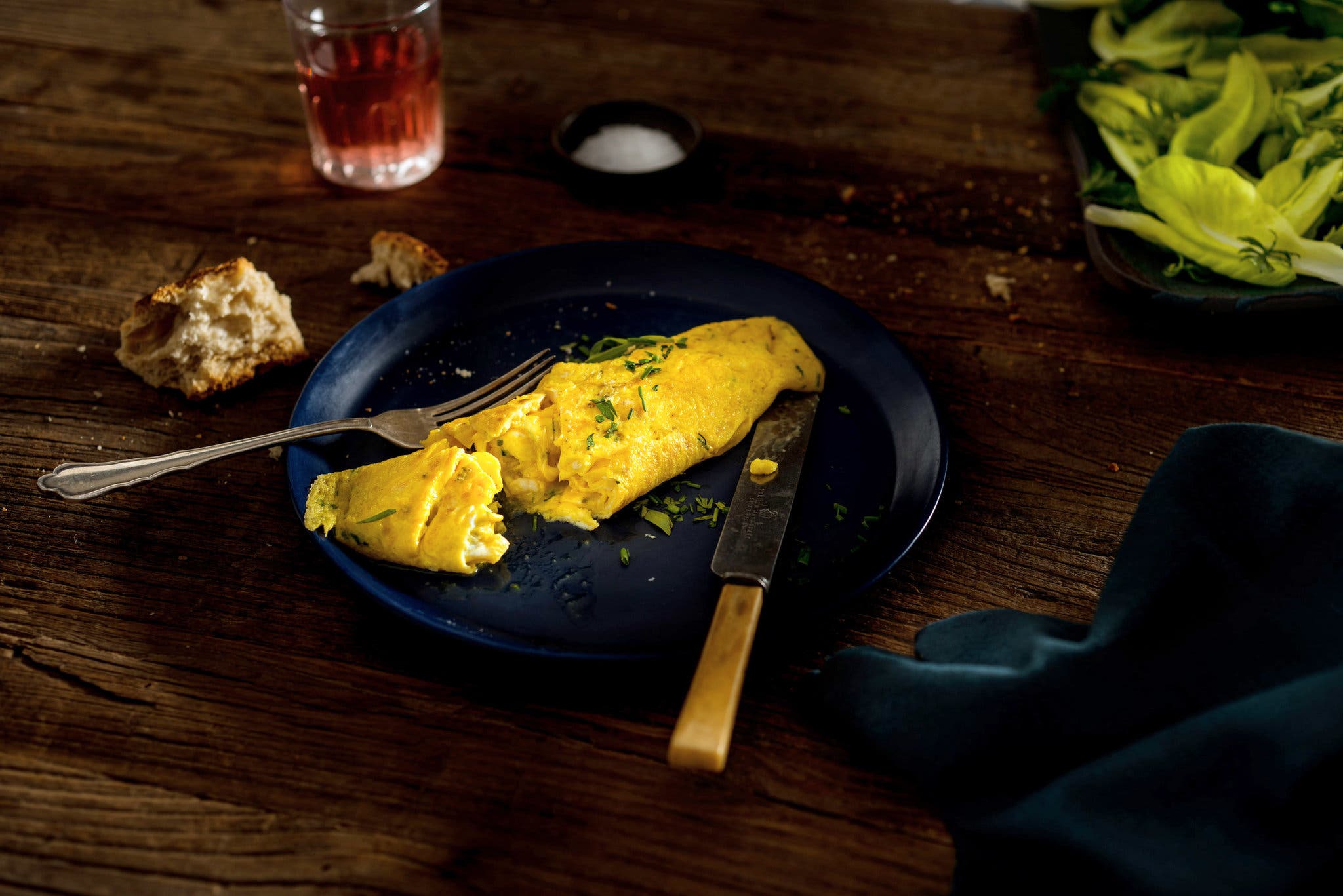
Francesco Tonnelli for The New York Times
The French have a genius for cooking with eggs. They poach them, they use them in sauces, they whip them into soufflés. And they fold them into omelets, an excellent introduction to that great tradition.
Like much of French cuisine, the omelet represents the perfect intersection of a precise technique and a pristine ingredient. The more skilled the cook and the better the eggs, the more ethereal the result.
The omelet is such an icon that it is often held up as the test of a chef’s abilities. But it is also regarded as one of the fundamentals, among the first dishes Julia Child made on Boston public television for French cooking neophytes as she publicized “Mastering the Art of French Cooking.” Whether made by a professional or a novice, it is undeniably speedy. As Child once said, introducing the dish: “How about dinner in half a minute?”
So what makes an omelet uniquely French? It is the exacting technique of folding the eggs to yield tender, loose curds in the center and a delicate but firm exterior. That juxtaposition sets the omelet apart from Italian frittatas, Spanish tortillas and Persian kukus, which are cooked into flat, sliceable cakes. We give a classic omelet recipe here, and another for an omelet mousseline, a fluffy variation in which the whites are whipped and then added to the yolks.
An omelet can be made either savory or sweet, and although sweet omelets have all but fallen away these days, it might be time to resurrect them. After all, eggs can be seasoned with sugar and fruit or a syrupy jam as easily as with salt, onions and cheese; think of clafoutis, tarts and soufflés. Once you have mastered the basic technique, the variations are practically limitless.
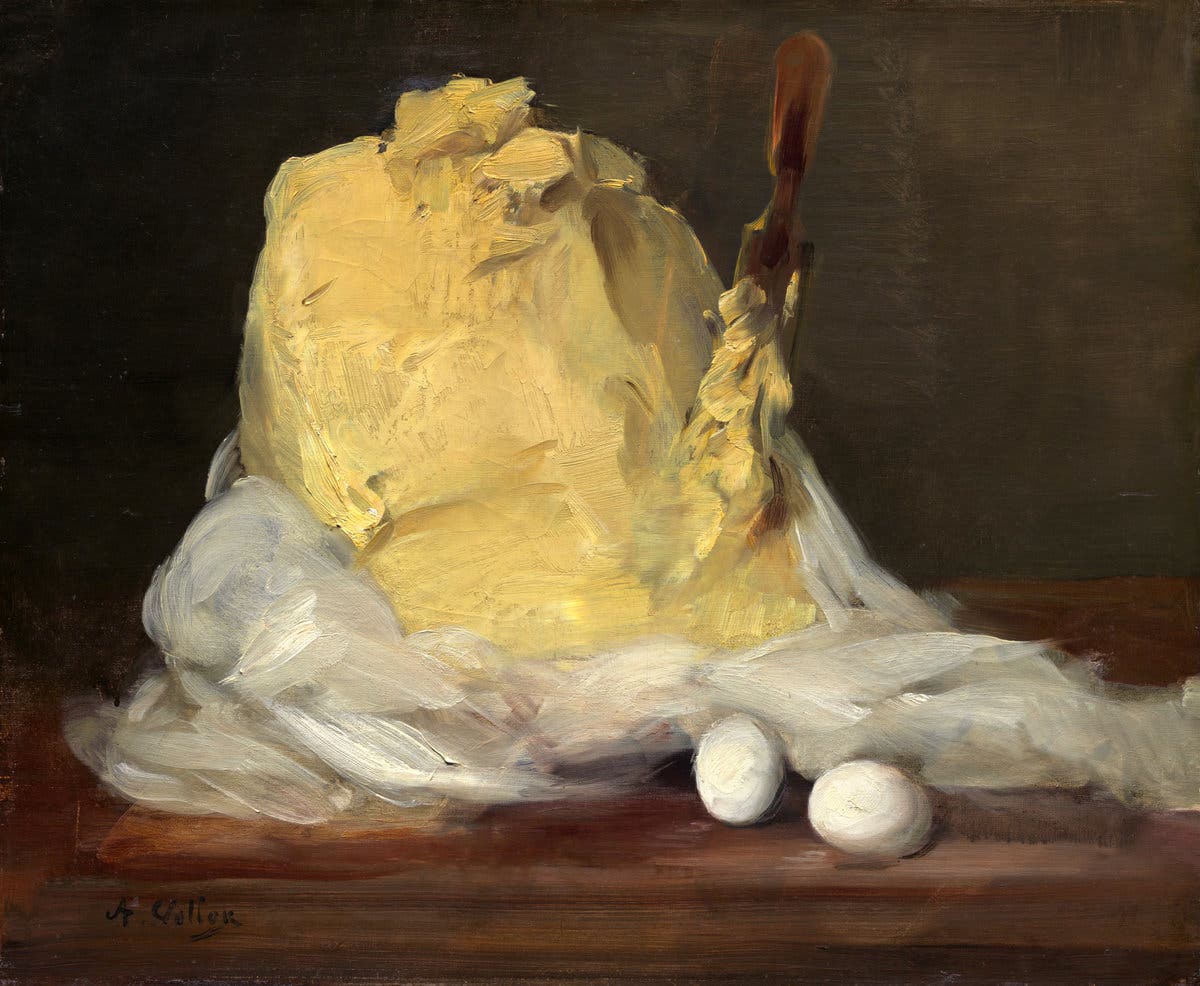
“Mound of Butter” by Antoine Vollon (1833-1900)National Gallery of Art, Washington
The omelet is ancient. Doubtlessly humans have eaten fried, beaten eggs since hens and other fowl were domesticated in the sixth century B.C. Romans had ovemele, eggs cooked with honey and pepper; Persians ate kuku, eggs fried with copious amounts of herbs. There were tortillas in early Spain, and frittatas in what would become Italy.
All were fried cakes loaded with fillings — vegetables, meat, potatoes, spices and herbs — cooked on both sides until set, and then sliced so they could be eaten out of hand.
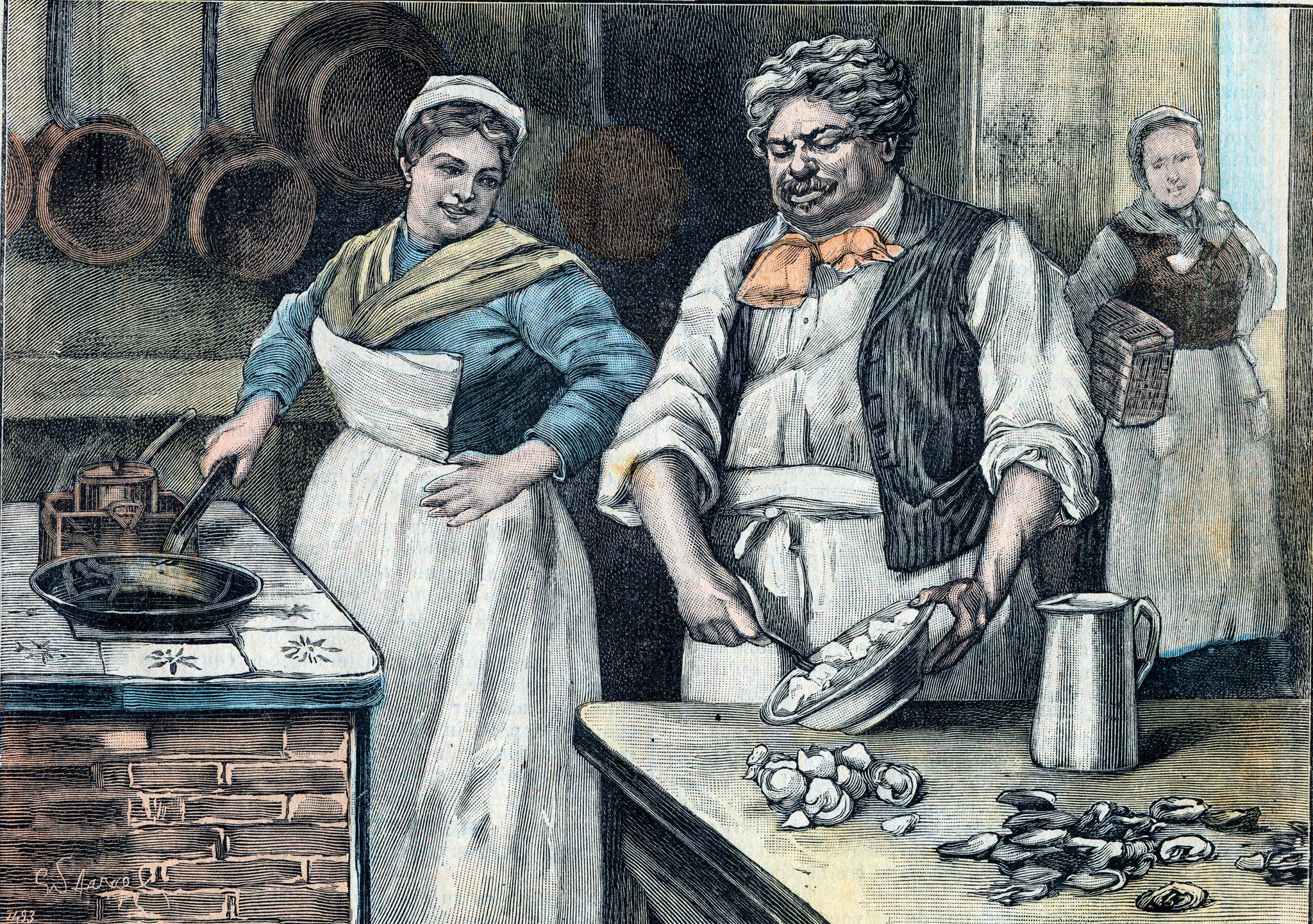
Stefano Bianchetti/Corbis, via Getty Images
But the fluffy French omelet we know is different. With its barely set eggs, it requires a spoon or fork to be eaten. The word, and variations of it, date to the mid-16th century — around the same time Catherine de Medici of Italy, who was married to King Henry II of France, is said to have introduced the fork to the French. Historians have speculated that the emergence of the fork and the evolution of the omelet may be intertwined.
By the 17th century, the omelet entered the canon, appearing in La Varenne’s “Le Pâtissier François” (1653) as an aumelette. The arrival of better stoves with enclosed fires, in the 18th century, made it easier for cooks to prepare omelets because they could more easily regulate the heat. The omelet’s popularity has only grown and endured, making it a staple today around the world in restaurants and home kitchens alike.
-
Omelet pan. If you don’t own a nonstick pan or a seasoned, carbon-steel omelet pan, now is the time to invest in a good one. It will be difficult to master an omelet in a stainless-steel pan or cast-iron skillet; those heavier pans are too hard to maneuver. Buy something easy to handle that adjusts to heat changes quickly.
-
Spatula. A heat-resistant rubber spatula is an excellent all-purpose kitchen tool. Here, you’ll use it for stirring and folding the eggs.
Wirecutter, a product recommendations website owned by The New York Times Company, has guides to the best nonstick pans and spatulas.
This recipe is for a basic French omelet with three eggs: enough for a hearty breakfast or brunch, or a light supper for one. The key to mastering this recipe is controlling the heat so the eggs do not brown, and whisking the eggs in the skillet so they set on the exterior but remain fluffy inside. A good nonstick or well-seasoned carbon-steel skillet is central to cooking the ideal omelet, which should be tender and slightly runny. Once you’ve got the technique down, you can play around with your seasonings, adding minced herbs, grated cheese, diced ham or sautéed vegetables. This recipe is part of The New Essentials of French Cooking, a guide to definitive dishes every modern cook should master.By The New York Times Cooking
The omelet is extraordinarily simple, and so it pays to choose your ingredients smartly and practice the cooking techniques at the stove.
Choosing Ingredients
-
European-style butter is best for an omelet because the fat content is slightly higher than that of most American-style butters. Always use unsalted butter, then add salt to the eggs, so you have greater control over the seasoning.
-
Use good eggs, preferably local. Eggs are the main component of this dish; the more flavorful they are, the better your omelet will be. They should be at room temperature, to allow your omelet to cook quickly and evenly. Leave them on the counter for an hour before cooking, or let them sit covered in warm water for 20 minutes.
-
Don’t overbeat your eggs. Beat them lightly, just until the white and yolks are well mixed and uniform in color, but not airy or bubbly. If you introduce too much air into the eggs by whipping them, you’ll end up with something closer to an omelet mousseline (see the recipe below) rather than the classic dish.
-
For fluffier eggs, add up to a tablespoon of diced cold butter into the beaten eggs before cooking.
-
Use an absolutely clean frying pan. Don’t cook the eggs in bacon fat or any singed leftovers that will alter the look and taste of your omelet.
-
Be judicious with the butter in the pan. You just need enough to coat the pan lightly but thoroughly — about 1 tablespoon. Do not use too much, or the eggs will be heavy and greasy rather than light.
-
For extra flavor, brown the butter in the pan before adding the eggs.
-
For richer eggs, after folding the omelet, smear the top with softened butter or crème fraîche before serving. This is also a good way to get garnishes to stick to the top, caviar and herbs in particular.
Cooking and Folding the Omelet
You’ve got three main technique options for cooking an omelet. While all will get you to the same end result of ethereal scrambled eggs encased in a gossamer shell, cooks generally prefer one method over the others. Try them, and see which one works best for you. Note that all are doing the same thing: introducing air into the eggs by beating them until they are fluffy, then letting the bottom set so it holds all those light, eggy curds.
As with any new technique, practice makes all the difference here. So after choosing the method you like best, practice it until you get it just right for your taste. You can fold your omelet either in half or thirds as desired. Both are traditional.
The Fork Method
Pour the eggs into the hot pan, and immediately start beating them with a fork until fluffy. Once curds begin to form, stop beating and let the bottom of the eggs set for a few seconds before tossing the pan or using a fork to fold the eggs over themselves, either in half or thirds.
The Swirl Method
Pour the eggs into the hot pan, then vigorously swirl the pan, shaking it back and forth to agitate the eggs until the center is fluffy and filled with large curds of eggs, and the bottom sets. Shake some more until the eggs start to flip over themselves, then slide the omelet onto a plate, either in half, or use a fork or spatula to fold into thirds.
The Lift Method
Pour the eggs into the hot pan and let them set for a few seconds. Lift the set edges with a spatula or fork to let uncooked egg run underneath, pushing the cooked part of the eggs into the center of the pan to form large, fluffy curds. Repeat this until the eggs are set on the bottom and just cooked in the center. Then use the spatula or fork to fold the eggs, either in half or thirds.

Francesco Tonelli for The New York Times
In France, omelets are often served plain, or with a sprinkle of minced herbs. When they are filled, it is with discretion, just enough to complement the flavor of the eggs without overwhelming them. Use ¼ cup to ⅓ cup filling for a three-egg omelet, or less with highly flavorful ingredients like herbs and strong cheeses.
Herbs & Vegetables
According to the French chef Jacques Pépin, the classic herbs for omelets are chives, chervil, tarragon and parsley — soft herbs that you can mince. Add the herbs to the bowl along with the eggs and beat everything together.
Vegetables of all kinds make great additions to omelets. They all need to be cooked first, in any way you like. Feel free to use leftovers if you have sautéed or roasted vegetables from last night’s dinner. Try spinach, kale, mushrooms, onion, shredded zucchini, shredded turnip, broccoli, corn, eggplant, diced cooked potatoes or roasted peppers. Cubed ripe tomato can be added raw, though it is a good idea to seed it first.
Meats & Seafood
Meat can give an omelet savory heft. Use diced ham or salami; cooked, crumbled sausages; cooked chicken or turkey; browned pancetta or bacon; or diced leftover roasted meats (roast beef or pork or lamb) and leftover stew meats. Even that little bit of leftover beef Bourguignon can find new purpose in life folded into an omelet.
Cooked flaked fish, either left over or freshly prepared, works beautifully in an omelet. Any kind of fish will work, from the lightest, flakiest sole to more robust salmon or sardines. Chopped cooked shrimp and scallops are lovely. You could also use canned fish such as tuna or salmon; flake the fish first and blot away any excess oil with paper towels.
Diced smoked salmon is a more deluxe omelet filling, as is caviar — either pricey sturgeon roe, or more affordable salmon or trout roe. Add caviar to the omelet after cooking, when it is already on the plate, and do so just before serving. It is more of a garnish than a filling. A dollop of crème fraîche or sour cream works particularly well alongside.
Cheese
You can add any kind of cheese to an omelet, both shredded or grated cheeses such as Cheddar, Gruyère, Parmesan or mozzarella, and diced soft cheese, including soft goat cheese, cream cheese, or ripe Brie or Camembert (remove the rind or not, to taste). Crumbled blue cheese and feta also work well.
Jam
Jam is nice with either a regular omelet or a mousseline omelet, but skip the black pepper. Use 2 to 3 tablespoons of any flavor jam or fruit compote, then sift powdered sugar over the top of the omelet when done.
